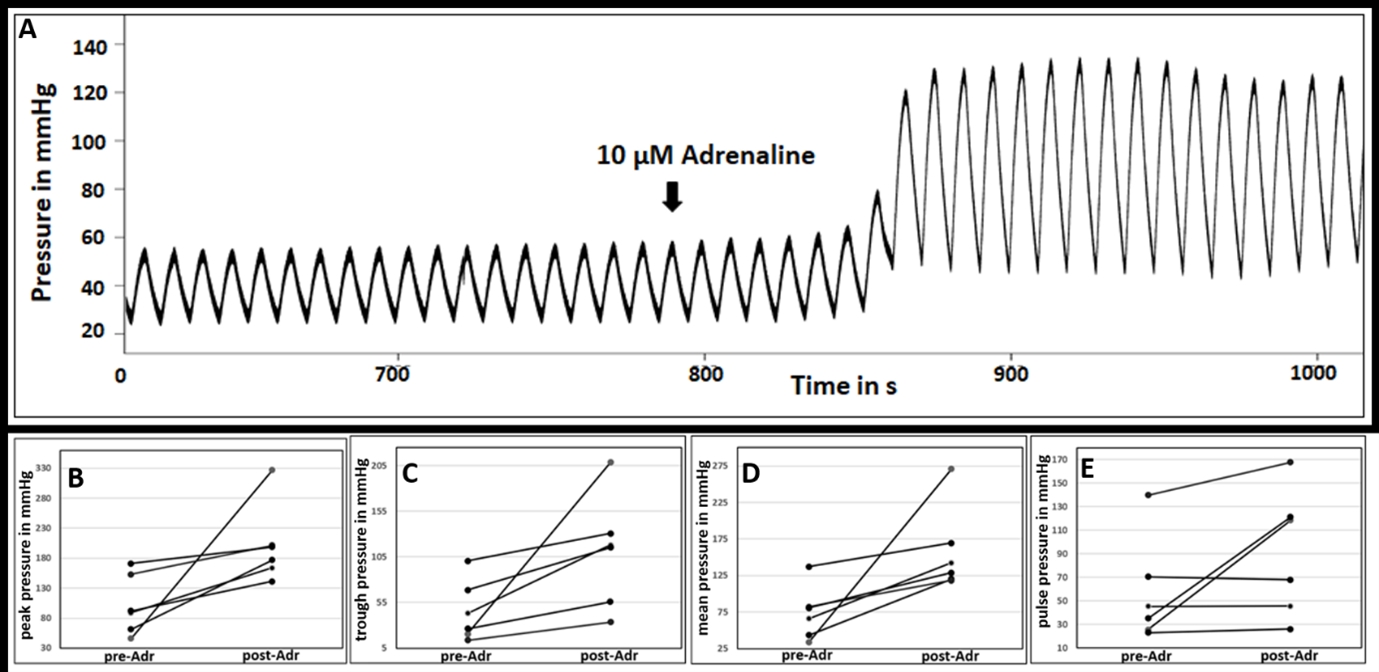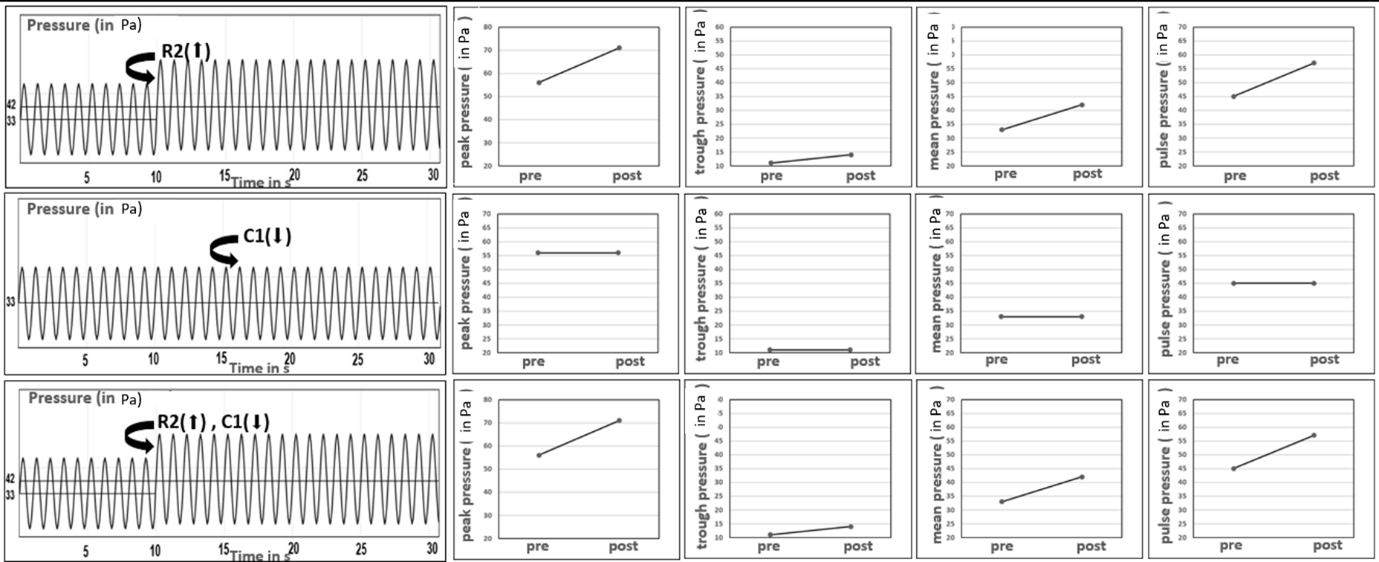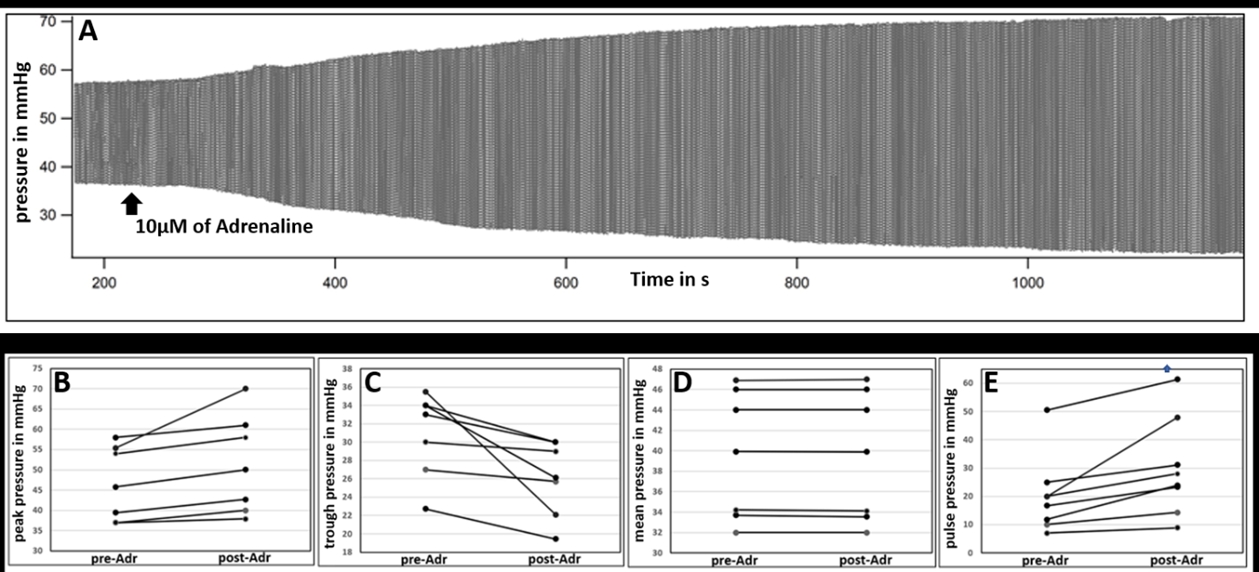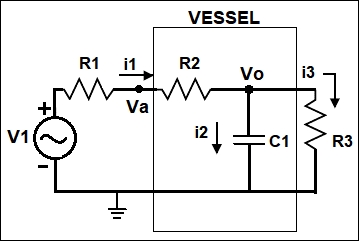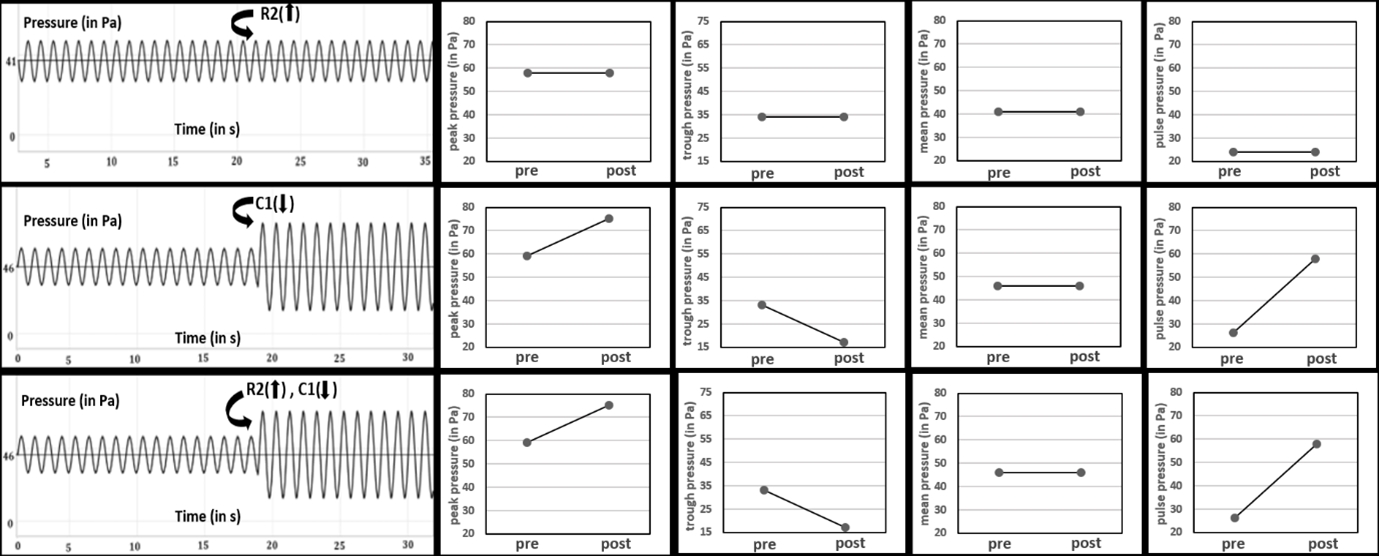Background: Smooth muscle contraction in small arteries is known to decrease the lumen diameter and therefore increase the resistance, whereas the large artery compliance is known to decrease [1]. Besides this information, there is no categorical evidence on what happens to the large artery resistance and small artery compliance during vasoconstriction, which has been addressed in the presented study. This is the first of its kind to present a comparative assessment of aorta and small artery (isolated vessel model) response to adrenaline, a potent vasoconstrictor, in terms of resistance (R) and compliance (C) through physiological in-vitro experiments as well as equivalent physiological modeling. Understanding the exact location of R and C can be used to see how drugs affect vascular resistance and compliance, thereby allowing us to conclude if there is a differential action of drugs on small arteries versus large arteries by assessing the changes in R and C. This understanding would enable the tailoring of anti-hypertensive therapies for essential hypertension (in which resistance is high) and isolated systolic hypertension (in which compliance is low) using targeted drugs that act on specific vessels [2,3,4]. Methods and Results: The study was approved by the Institutional Review Board of Christian Medical College Vellore, IRB no: 9930, 17/02/2016. Goat aorta/legs were freshly procured from a registered slaughterhouse (Co-ordinates 12.93°N 79.13°E accreditation number: 309/13) and transported in ice-cold extra-cellular solution. Isolated cylindrical segments of goat aortae and small arteries were perfused with a pulsatile pump (Harvard Apparatus, rodent blood pump model 1407) at a preset flow rate under physiological conditions, and lumen pressures were recorded before and after the addition of adrenaline (10µmol/L) using a pressure transducer connected to an intra-arterial cannula (Fig 1). In aortae, adrenaline caused a rise in peak pressure, a drop in trough pressure, but did not change mean pressure (p = 0.357, WSR*) (Fig 3D, n = 7). Whereas in small arteries, vasoconstriction caused an increase in all the pressures (systolic, diastolic, and mean pressures, p = 0.028, WSR) (Fig 4D, n=6). Using dimensions from the tissues and the tubings of the experimental set-up, equivalent electrical models were simulated (Fig 2). Changes in lumen pressures in response to adrenaline were compared with equivalent voltage responses in the simulation to changing values of R2 and C1 of the vessel model (Fig 2). Simulation results show that vasoconstriction in aorta does not lead to a significant reduction in lumen diameter sufficient enough to cause an increase in resistance and mean pressure (Fig 5, panels 2, 3). Whereas during small artery vasoconstriction, there is a significant reduction in lumen diameter causing an increase in vascular resistance, but a decrease in compliance if any, does not affect any of the pressures measured (Fig 6). Conclusion: The inference is that large artery vasoconstriction does not lead to a significant reduction in lumen diameter sufficient enough to cause a rise in resistance and mean pressure. Whereas small artery vasoconstriction increases resistance but does not change compliance. * Wilcoxon’s signed-rank – WSR
Physiology 2021 (2021) Proc Physiol Soc 48, PC069
Poster Communications: Changes in aortic resistance and small artery compliance during vasoconstriction
Naveen Gangadharan1, 2, Aravindhan V3, Benjamin Jebaraj3, Shikha Mary Zachariah3, Suresh Devasahayam1, Gurunathan Saravana Kumar2, Sathya Subramani3
1 Dept. of Bioengineering, Christian Medical College Vellore, Vellore, India 2 Dept. of Engineering Design, Indian Institute of Technology Madras, Chennai, India 3 Dept. of Physiology, Christian Medical College Vellore, Vellore, India
View other abstracts by:
Where applicable, experiments conform with Society ethical requirements.

